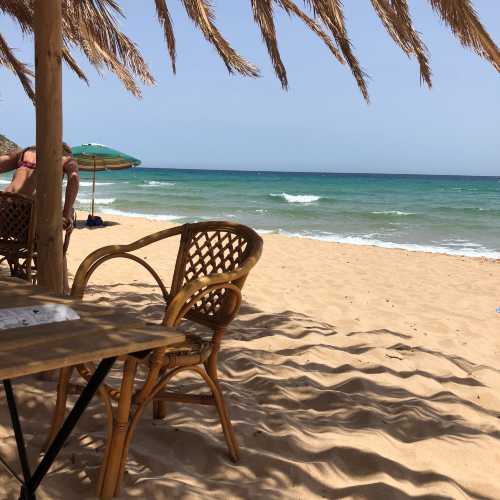Popular Trip Moments
Iksan Day Trip: Ginseng Chicken Soup, Prison Dramas & Royal History! 🇰🇷✨ | Iksan City's famous restaurant, Tomare Noodle Factory | A great coffee spot in Iksan | The majesty of Korea's UNESCO World Heritage Site🇰🇷 Iksan Mireuksaji | A retro-themed café in Iksan that feels like a time-traveling train ride. | 💕Let's go to a large cafe in Iksan❣️Good cafe, Cafe Deokgi | Iksan's Large Café, Café Deokgi | 💜🤍Iksan's large cafe, a great cafe for outings, Cafe Deokgi | 💙Iksan large cafe, a great cafe to go on a picnic🩵Cafe Deokgi | 💕Iksan large cafe, a great cafe to go on an outing, Cafe Deokgi💕 | 💖Iksan large cafe, a great cafe to go on an outing, Cafe Deokgi | Hidden Gem of Iksan|Healing Moments in Hwangdeung Garden's Flower Season | Iksan cafe with delicious coffee and great natural view✔️ | A spacious café in Iksan perfect for a cool summer date. | Enjoying music while drinking coffee in a nice atmosphere😛 | A fun Iksan coffee tour where you can choose coffee beans🫣 | Indoor dating spot in Iksan with a variety of bread options | Iksan Museum with Seven Concepts😛 | Enjoying a cafe trip in Iksan while eating sandwiches🤣 | Museum with a Spooky Shamanic Room | A serene and beautiful church in Korea | Stress-Free Historical Trip to Iksan 🩵 | A place where you can glimpse the past of Iksan 🩵. | A travel destination in Iksan where you can truly feel the passage of time. | Must-Visit Spot in Iksan! | A spacious two-story café in Iksan, perfect for a date. | A cozy café in Iksan's Mohyeon area, perfect for quiet conversations. | A journey to Iksan filled with timeless charm | Famous bakery in Iksan known for its corn bread | A unique retro-style time travel café
Recommended Attractions at Popular Destinations
Attraction near Bangkok | Attraction near Manila | Attraction near Tokyo | Attraction near Taipei | Attraction near Hong Kong | Attraction near Seoul | Attraction near Kuala Lumpur | Attraction near Los Angeles | Attraction near Shanghai | Attraction near New York | Attraction near Shenzhen | Attraction near Osaka | Attraction near Singapore | Attraction near London | Attraction near Guangzhou | Attraction near San Francisco | Attraction near Beijing | Attraction near Macau | Attraction near Bali | Attraction near Jakarta | Attraction near Paris | Attraction near Ho Chi Minh City | Attraction near Istanbul | Attraction near Phuket | Attraction near Chicago | Attraction near Seattle | Attraction near Toronto | Attraction near Orlando | Attraction near Cebu | Attraction near Chiang Mai
Popular Attractions
Gold Coast Sea World | Three Natural Bridges | Ocean Park Hong Kong | Snoopy Garden | Madame Tussauds BANGKOK | Tekapo Springs | Renwei Temple | Jingshan Park | Lake Pukaki | Changsha Ecological Zoo | The Ancient City | Yuanmingyuan Park | War Remnants Museum | Tongli Ancient Town | Lion Grove Garden(Shizilin Garden) | Aqua Park Batumi | Huaqing Palace | Sanctuary of Arantzazu | Huajue Lane, the Great Mosque | Saigon Japan Town | Bukit Bidadari | Jackie Robinson Memorial Field | Chapelle Notre-Dame-des-Voirons de Boëge | Talavera de la Reina Source | Ma On Shan Sports Centre | Sri Kaththavady Pillayar Kovil ஸ்ரீ கத்தாவடிப் பிள்ளையார் கோயில் | Barrage des Settons | Eccup Reservoir | Stade Marigny | NG KERK Kimberley
Popular Restaurants in Iksan-Si
JukStory Iksan Eoyang Store | Coffee Myeongga | Gongcha | Mano430 | 7 Street Raw Meat | Mireuksan Sundubu | Mcdonalds | Oso Bakery | Starbucks IkSan Yeongdeung | Syaron Restaurant | Pancake Ju Nammun Native Sundae Soup | Coffee Ni | Maenhatan | Npub 앤펍 | Minsogchon | 올댓뮤직 파머스브루어리 sports pub & live music | Hana Yori Dango (Japanese) | 오가네장뇌삼한방백숙 | Kino | Revival | Dutumdutum | nun-kkoch-tteul | Elbegang | Mar Rueda | CONCEPT1 | Gui쟁이 원광대점 | Malg eum | Coffee Belt | Chahyang-Gi | yalaehyang
Popular Ranked Lists
Popular Must-Visit Restaurants in Santorini | Top 9 Local Restaurants in Lushan Global Geopark | Popular Must-Visit Restaurants in Paris | Popular Best Things to Do in Tongdao | Popular Premium Hotels in East Lothian | Popular Best Things to Do in Taoyuan | Popular Best Things to Do in Heyuan | Popular Premium Hotels in Tokat Province | Popular Premium Hotels in Manisa Province | Popular Must-Visit Restaurants in Auckland | Top 9 Best Things to Do in Chifeng | Top 5 Best Things to Do in Kangding | Popular Must-Visit Restaurants in London | Popular Must-Visit Restaurants in Florence | Popular Premium Hotels in Van Province | Popular Premium Hotels in Braga District | Top 3 Premium Hotels in Vila Real District | Top 3 Premium Hotels in Eskisehir Province | Popular Must-Visit Restaurants in Munich | Popular Must-Visit Restaurants in Kyoto | Popular Premium Hotels in Darlington | Top 9 Best Things to Do in Baoshan | Popular Must-Visit Restaurants in Nha Trang | Top 6 Best Things to Do in Daxing'anling | Popular Must-Visit Restaurants in Ho Chi Minh City | Popular Best Things to Do in Yuyao | Popular Must-Visit Restaurants in Sydney | Popular Premium Hotels in Mardin Province | Top 3 Premium Hotels in Konya Province | Popular Premium Hotels in Nakuru
Payment Methods
Our Partners
Copyright © 2025 Trip.com Travel Singapore Pte. Ltd. All rights reserved
Site Operator: Trip.com Travel Singapore Pte. Ltd.
Site Operator: Trip.com Travel Singapore Pte. Ltd.






















